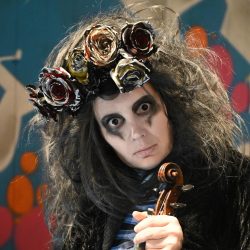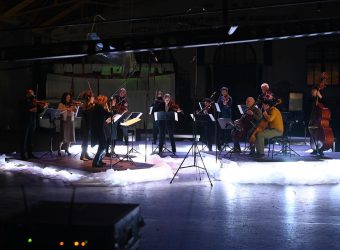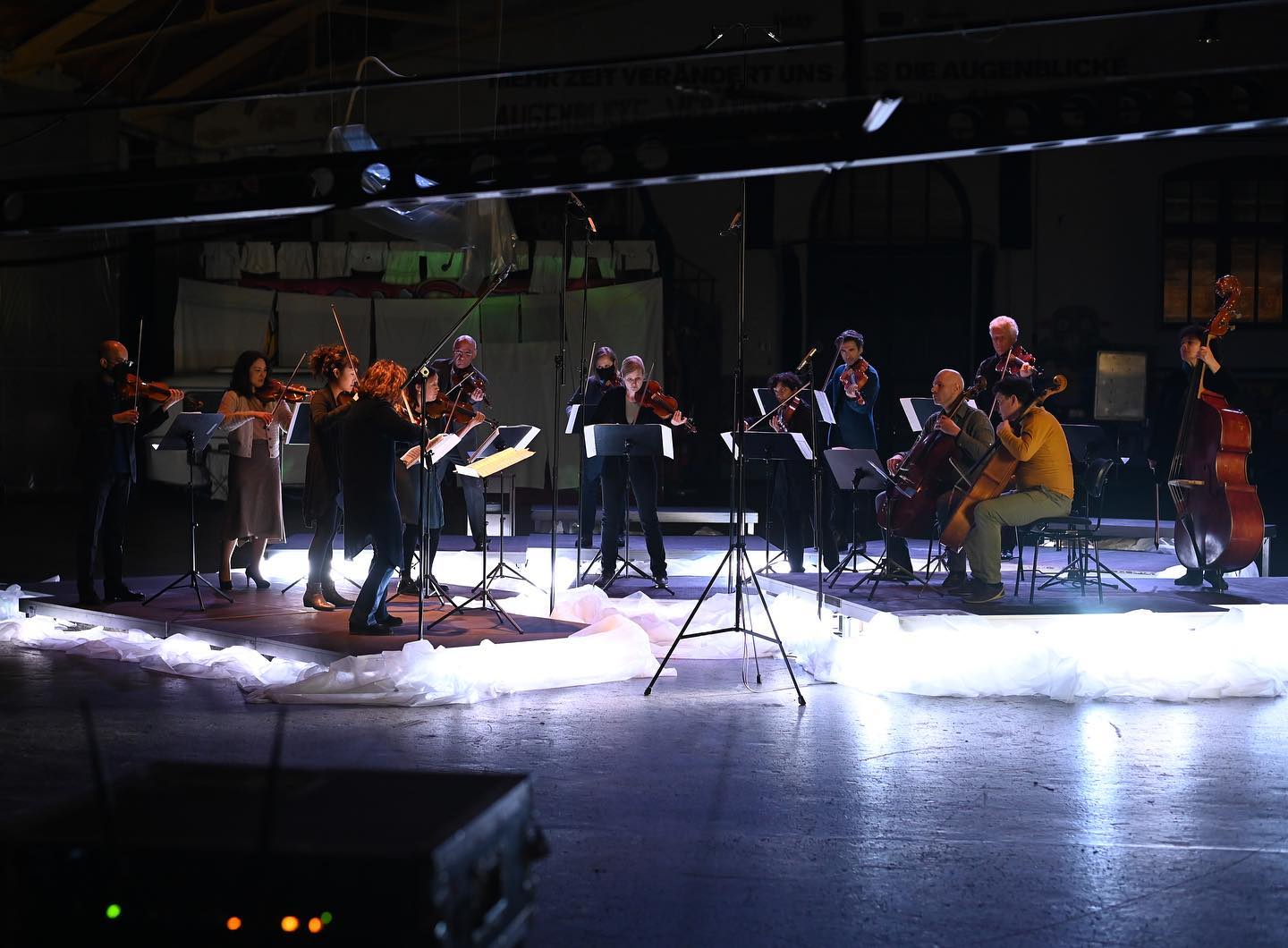 Switzerland Death and the Maiden – Patricia Kopatchinskaja (violin) and CAMERATA BERN: Streamed via Virtual Circle by Harrison Parrott.
Switzerland Death and the Maiden – Patricia Kopatchinskaja (violin) and CAMERATA BERN: Streamed via Virtual Circle by Harrison Parrott.

August Nörminger – Toden Tanz (arr. Michi Wiancko)
Anonymous – Byzantine Chant on Psalm 140 (arr. Kopatchinskaja)
Schubert – Allegro and Presto from ‘Der Tod und das Mädchen’, String Quartet No.14 in D minor, D810 (arr. Kopatchinskaja); mvts interspersed with Der Tod und das Mädchen, D531 (arr. Wiancko)
Carlo Gesualdo – Madrigali, Libro VI: Moro, lasso, al mio duolo (arr. string quintet)
Kurtág – Ligatura – Message to Frances-Marie (The Answered Unanswered Question), Op.31b; Ruhelos from Kafka-Fragmente for solo violin, Op.24
Patricia Kopatchinskaja remains one of the most powerful voices in music today. Her programmes are wide-ranging, unexpected and always stimulating. Her Wigmore Hall recital in May 2017 with pianist Anthony Romaniuk found C. P. E. Bach rubbing shoulders with Sciarrino, Biber, Crumb and J. S. Bach, as just some of the other composers.
Kopatchinskaja’s programme was based around that of the Alpha Death and the Maiden disc with the Saint Paul Chamber Orchestra, but seeing it in the context of these visuals was remarkable. Filmed in a forbidding space (Reitschule Bern) where lights from passing underground trains can illuminate walls, and where darkness (mainly) prevails only emphasised the strangeness of it all. But she has a point; Schubert’s quartet, the song and its text by Mathias Claudius which it references are certainly not comfortable.
Certainly, the sight of Kopatchinskaja in a skeleton costume leading August Nörminger’s Toden Tanz was striking. The dance element was certainly there, as was the grotesque element; a pagan dance of death (the composer was born around 1560 and died 1613). Sudden visual juxtapositions – a wall with graffiti illuminated by a flaming torch, hands grasping cold, mossy stone – were mirrored by the move to Byzantine chant (on violin) against a drone, disembodied, hesitant, otherworldly. Without knowing it was a Byzantine chant, could one have known this was music of the distant past; or the present; or even the future?
This is about as far from a concert experience as one can get. Schubert’s quartet, arranged for string ensemble by Kopatchinskaja, was astonishing, that opening gesture even more of a cry of anguish as it is in the Alpha recording, and how soft the responses. Kopatchinskaja led from the front, active, ever musical. This was chamber music at its highest level. As if to emphasise the different nature of the performance, the camera work itself was highly inventive – including deliberately showing other cameramen at work, offering a disruptive jolt to the viewer, instantly changing our response to the ongoing sounds, ripping us away from involved engagement on the performers themselves. The performance itself was revelatory; the sound, too, supportive, with fantastic definition for the lower strings (better than the Saint Paul CO was afforded on the Alpha disc).

Hearing Kopatchinskaja sing the Schubert Lied with her face in close-up and in a sort of near-Sprechgesang brough Schoenberg’s Pierrot lunaire to mind, ending with a most disturbing smile; it was an incredible complement to the Andante con moto of the quartet. As the music gets quicker, the discipline of the CAMERATA BERN upper violins was astonishing. Contrasts were huge, and some col legno additions brought timbral change. There was terrific power, grounded in the depths of the Earth by the cellos and double basses; in this, the most familiar of Schubert’s quartets, it was as if everything was rethought and, in the process, everything became new.
Performed with a white caravan in the background and white shirts draped over the music stands, Gesualdo’s astonishing madrigal Moro, lasso, al mio duolo (I die, alas, in my suffering) emerged in a guise for string quintet; if anything, hearing this shorn of words emphasised the remarkably progressive nature of Gesualdo’s score. It seemed a perfect journey to take the Schubert slow movement on; lines twisting, turning, anguished. How clean, though, the Scherzo felt afterwards, its accents biting, staccato phrases almost Mephistophelean in their angularity, and how bright the lighting in response.
Obviously, the next stage would be Kurtág(!), that most elusive of Hungarian composers. Two pieces, in fact, the first, Ligatura – Message to Frances-Marie (The Answered Unanswered Question), a sort of bridge, two cellos on ground level, two violins suspended in a cage, a study in sonority itself. Kurtág’s Ruhelos could hardly be more different and offered Kopatchinskaja an opportunity for that combination of violin playing and vocalisation for which she is famed. After that, the whirlwind of the Schubert finale, a proper Presto as prescribed and at last performed in bright, natural sunlight, the coda a powerhouse of scampering energy, but without a trace of being rushed. How powerful the chordal statements in this finale were; and how careful Kopatchinskaja was to emphasis Schubert’s obsessive repetitions.
Kopatchinskaja breathes life into everything she touches, that we knew already. But this film took it to a new level. Astonishing.
Colin Clarke
For more about Harrison Parrott Virtual Circle (click here).

Der «Death and the Maiden»-Film, aufgenommen in der alten Reithalle in Bern, gespielt von der Camerata Bern unter der grossartigne Leitung von Patricia Kopatchinskaja, war eine Wucht. Grossartig gespielt und aufgeführt in der realen und irrealen Welt. Ein begeisterter Laie.
Translation: The ‘Death and the Maiden’ film, recorded in the old riding arena in Bern, played by the Camerata Bern under the great direction of Patricia Kopatchinskaja, was a stunner. Greatly played and performed in the real and unreal world. An enthusiastic layman.
S&H write: Danke!
Her ‘Death And the Maiden’ stuns both visually and musically. I play the CD often but the video adds much more.